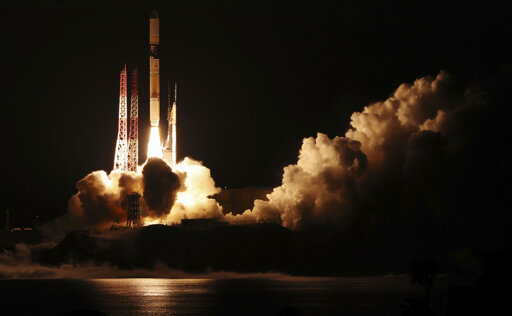Japan on Sunday successfully launched a climate change monitoring satellite on its mainstay H-2A rocket, which made its final flight before it is replaced by a new flagship model designed to be more cost competitive in the global space market.
The H-2A rocket lifted off from the Tanegashima Space Center in southwestern Japan, carrying the GOSAT-GW satellite as part of Tokyo’s effort to mitigate climate change. The satellite was safely separated from the rocket and released into a planned orbit about 16 minutes later.
Scientists and space officials at the control room exchanged hugs and handshakes to celebrate the successful launch, which was delayed by several days due to a malfunctioning of the rocket’s electrical systems.
Keiji Suzuki, a Mitsubishi Heavy Industries official in charge of rocket launch operations, said he was more nervous than ever for the final mission of the rocket, which has been his career work. “I’ve spent my entire life at work not to drop H-2A rocket … All I can say is I’m so relieved.”



JAXA remains my favorite of the big three (western) space agencies to visit the facilities for.
They have the same love and wonder for space that the NASA facilities had when they were built, but without the military undertones.